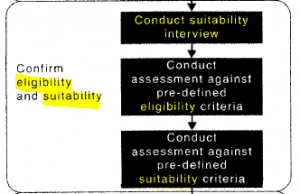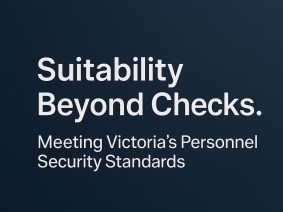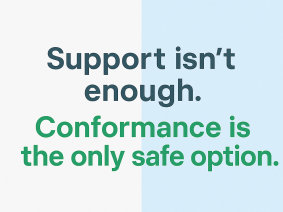Vetting the Cleard.life way: The secret sauce.
When evaluating a candidate’s suitability, Cleard life considers the information through the lens of the Home Affairs Adjudicative Guidelines (AG). In addition to brief introductory explanations for each guideline, the lists potentially disqualifying conditions and mitigating conditions, which are very useful in evaluating a candidate’s suitability. These guidelines are not inflexible rules of law. Instead, recognising the complexities of human behaviour, these guidelines are applied in conjunction with the factors listed in the adjudicative process. This, together with our professional skills and depth of vetting experience, enables us to meet our goal: a fair, impartial and common-sense result.
The entire process is a conscientious scrutiny of variables known as the “whole person concept.” Cleard life considers all available, reliable information about the person, past and present, favourable and unfavourable, in making the decision. In reaching the decision, Cleard life draws conclusions that are reasonable, logical and based on the evidence contained in the record.
This process is now Australian Standard 4811 2022 Workforce Screening, page 8.

Under the whole of person concept, we also evaluate the candidate’s suitability by considering the totality of the candidate’s conduct and all the circumstances. We consider what the AG calls adjudicative process factors:
(1) the nature, extent, and seriousness of the conduct;
(2) the circumstances surrounding the conduct, to include knowledgeable participation;
(3) the frequency and recency of the conduct;
(4) the individual’s age and maturity at the time of the conduct;
(5) the extent to which participation is voluntary;
(6) the presence or absence of rehabilitation and other permanent behavioural changes;
(7) the motivation for the conduct;
(8) the potential for pressure, coercion, exploitation, or duress; and
(9) the likelihood of continuation or recurrence.
Likewise, we avoid drawing inferences grounded on mere speculation or conjecture. Furthermore, our commitment to the protection of the employers/sponsor’s assets and resources (think: information, IT systems, physical workplaces, people and reputation) is an over-riding consideration.
Sponsors repose a high degree of trust and confidence in people with access to sensitive information (and in some cases young or vulnerable people). It is our belief that this fiduciary relationship transcends normal working hours and endures throughout off-duty hours. Decisions include, by necessity, serious consideration of the possible risk that the candidate may deliberately or inadvertently fail to protect or safeguard information, resources and people. These decisions entail a certain degree of extrapolation as to potential, rather than actual, risk of compromise or breach or disregard of resources. Therefore, only qualified, experienced and skilful vetting officers are used. With only a few hundred vetting officers in Australia, we boast an enviable position as a leader in vetting and a solid reputation within the Australian vetting industry.
If there is any doubt concerning the candidate’s suitability, it will be resolved in favour of the Employer/Sponsor. By using the risk grading mechanism 1 through to 5, we can provide the necessary insight into the deliberations.
2/5 = “Caution” – Doubts linger concerning the mitigating factors outweighing the aggravating factors.
1/5 = “Adverse” – The aggravating factors have outweighed the mitigating factors.
We choose not to grade a Result as a “3/5” due to the ambiguity it could create and it would be contrary to the idea of “resolving in favour of the Sponsor.” If the Recommendation is adverse, the Sponsor can use this information to consider the risk. In higher level assessments, using the AGs suitability indicators (Honesty, Trustworthiness, Tolerance, Maturity, Loyalty and Resilience), we also provide the Sponsor with a HTTMLR character index which rates the Candidate’s Honesty, Trustworthiness, Tolerance, Maturity, Loyalty and Resilience.
5/5 = “Favourable” – No issues identified or a very high level of confidence that the risk has been reduced to an acceptable level.
4/5 = “Favourable” – Confident that the risks identified in the record has or have been reduced to an acceptable level. In other words, the mitigating factors have outweighed the aggravating factors.
Both 4/5 and 5/5 in our professional view are assessed as suitable candidates to move into positions of trust. See below for an example Result.
As the analysis behind the Result is “blind” to the Sponsor, our clients. Sponsors can use third party Auditors to confirm we have met contractual obligations – which includes our analysis linking with the AGs guidelines. This feature offers the Sponsor the peace of mind that they can “trust” the Results we provide them and “verify” that the workings are sound, accurate and complete.
We welcome your feedback and if you have any questions, please make contact with us today.
More info that may be of interest:







